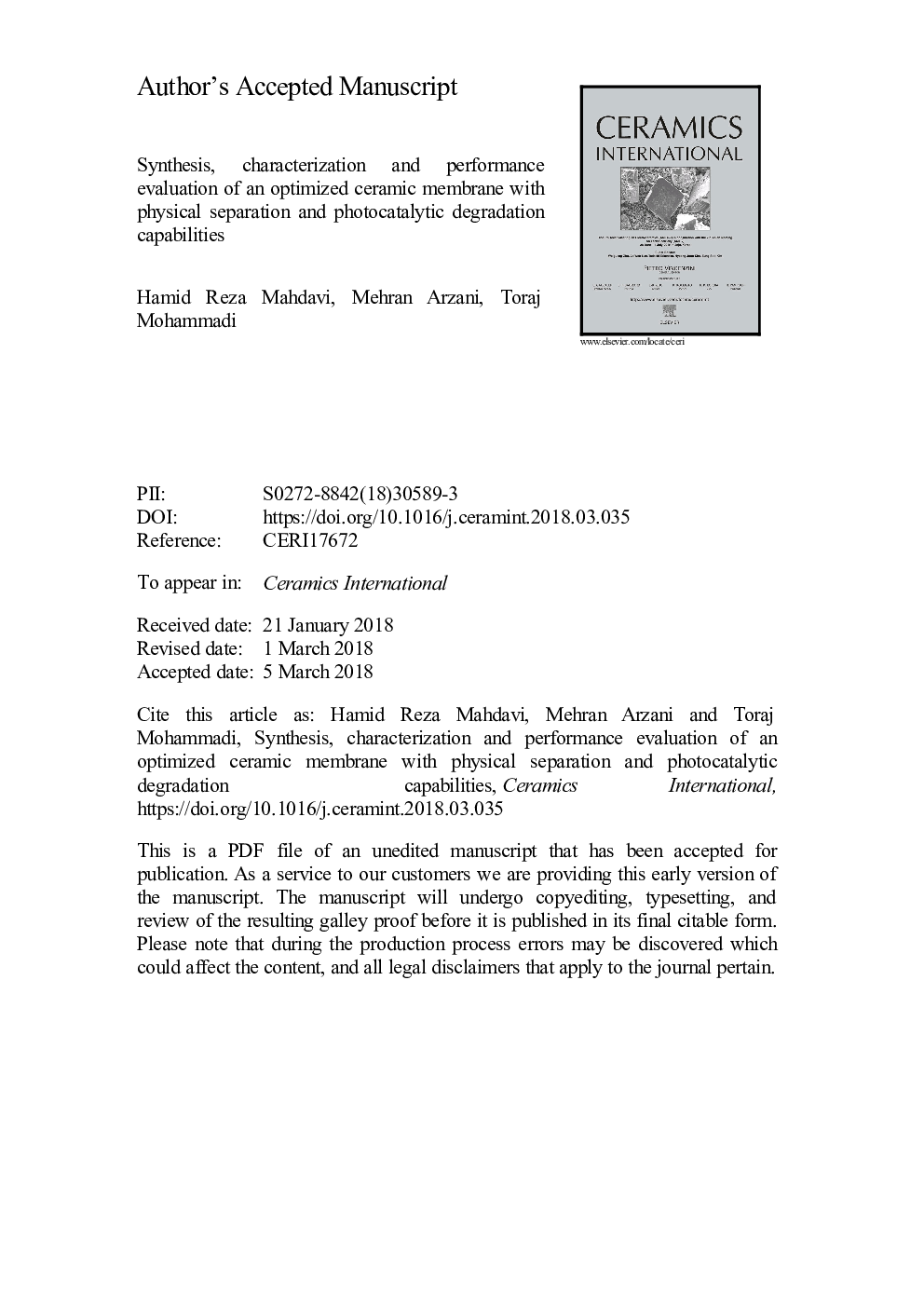| Article ID | Journal | Published Year | Pages | File Type |
|---|---|---|---|---|
| 7887027 | Ceramics International | 2018 | 49 Pages |
Abstract
The main goal of the present study is synthesis, characterization and performance evaluation of an optimized photocatalytic ceramic membrane for wastewater treatment. It consists of three layers including alumina (Al2O3) macroporous support, colloidal titania (TiO2) mesoporous intermediate layer and polymeric TiO2 mesoporous top layer in order to obtain a pore gradient from the support through the top layer of membrane. The colloidal and polymeric TiO2 layers were prepared via the sol-gel method and coated using sol dip-coating approach. In order to optimize the membrane, physical separation and photocatalytic degradation capabilities of each colloidal and polymeric layer as a function of time were evaluated using Rhodamine B (RhB) aqueous solution. Thus, optimum coating number of intermediate layer and top layer were determined. Also, the performance of the optimized membrane was investigated via oily wastewater treatment using crude oil and water emulsion. Based on the performance results, two consequence colloidal layers and one polymeric layer were considered as the optimum layer number. Also, RhB photocatalytic degradation was 24.7% and RhB physical separation and permeation flux were 40.4% and 25.7â¯kgâ¯mâ2 hâ1, respectively. Furthermore, based on the oily wastewater treatment experiments, permeation flux and chemical oxygen demand (COD) rejection at the best-operating conditions (pressure of 5â¯bar, the temperature of 30â¯Â°C and cross flow of 600â¯lâ¯hâ1) were 29.1â¯kgâ¯mâ2 hâ1 and 78.4%, respectively. The prepared membrane was found efficient and exhibited high industrial potential due to its multifunctional capability and thus can be employed as an advanced material for wastewater treatment applications.
Related Topics
Physical Sciences and Engineering
Materials Science
Ceramics and Composites
Authors
Hamid Reza Mahdavi, Mehran Arzani, Toraj Mohammadi,
